Do you want to know what 23andMe results look like? In this post, see two examples of 23andMe results from two people with completely different backgrounds.
You will get a good idea of what you could expect from your own results, as well as learn some tips about how you can use your own DNA results from 23andMe to learn more about your ancestors.
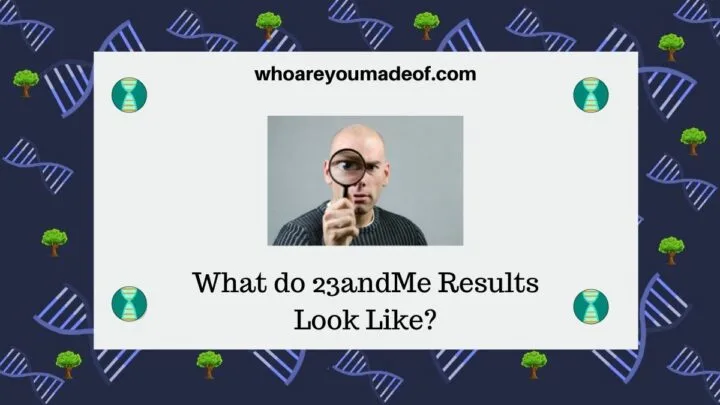
One of the most common questions that I get on this site about DNA testing is whether it works well for people for a diverse range of backgrounds and ethnicities. This article shows results for two different people whose ancestors were essentially from completely different continents.
It is helpful to see the wide range of regions that show up in 23andMe results. There are currently more than 227 populations and regions that 23andMe can match with your DNA.
What comes with 23ansdMe results?
23andMe ancestry results consist of the following elements:
- Ancestry Composition report (an ethnicity estimate)
- DNA Relatives (genetic matches)
- Direct-line maternal haplogroup (mtDNA)
- Direct-line paternal haplogroup (Y-DNA, males only)
- Neanderthal results
- Traits
In addition to the elements that I listed above, there are a few other very important features that come with all results. For example, the 23andMe Chromosome Browser allows users to compare their DNA with their matches to view detailed chromosome data, and the Family Tree tool automatically populates a tree with DNA matches.
Below is a screen capture from the 23andMe Chromosome Browser. You can see that these two DNA matches share 18 centimorgans (cMs) of DNA across 1 segment, and you can see that the shared segment is located on Chromosome 2.
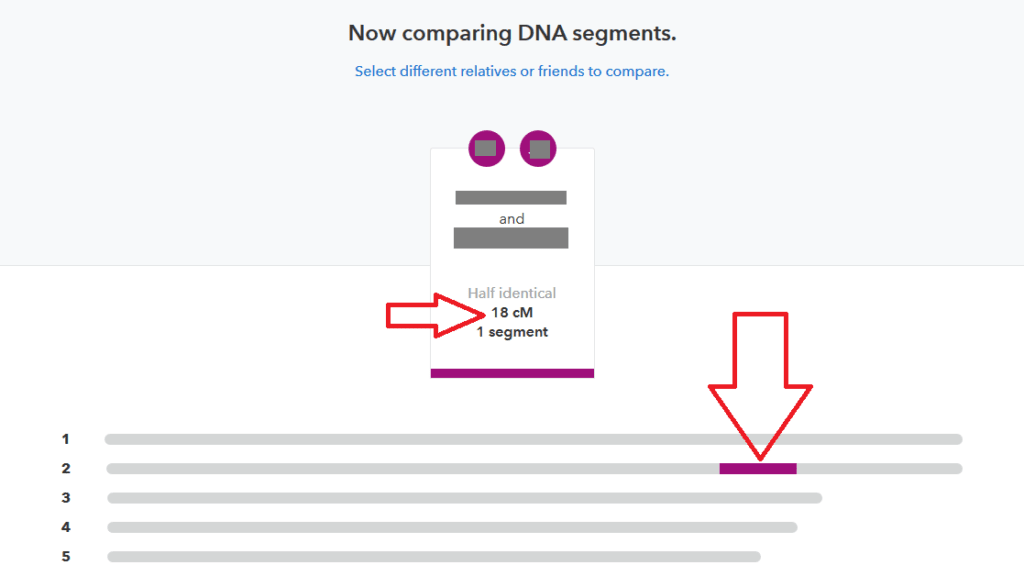
Further details, such as the exact location of the shared DNA segment on Chromosome 2 are viewable below the visual display of shared DNA. If more segments are shared between you and your match, you will be able to see those as well.
As I mentioned previously, you will find two different sets of examples of 23andMe results in this article. Keep reading to see those sample results!
23andMe results for Mexican or Native American ancestry
If you have ancestry from Mexico or any other Latin American country, your 23andMe results will show the regions of the world where your ancestors most likely lived. Most people with ancestry in Latin American countries will find regions from North and South America (Indigenous American/Native American), Europe, Africa, or Asia in their results.
For example, the person below was born in a small town in Central Mexico. As you can see from their Ancestry Composition Report, their primary ancestry is Indigenous American:
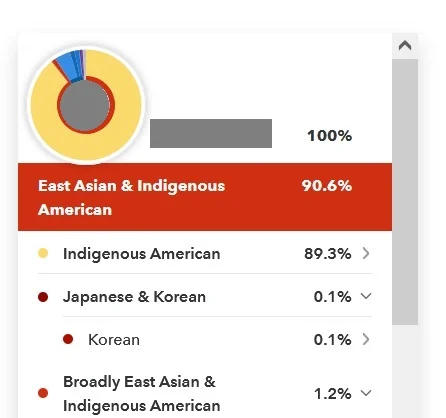
However, even though most of their ancestors are Native American, they do have DNA matching other regions of the world. Below, you can see that their DNA matches multiple European and African areas:
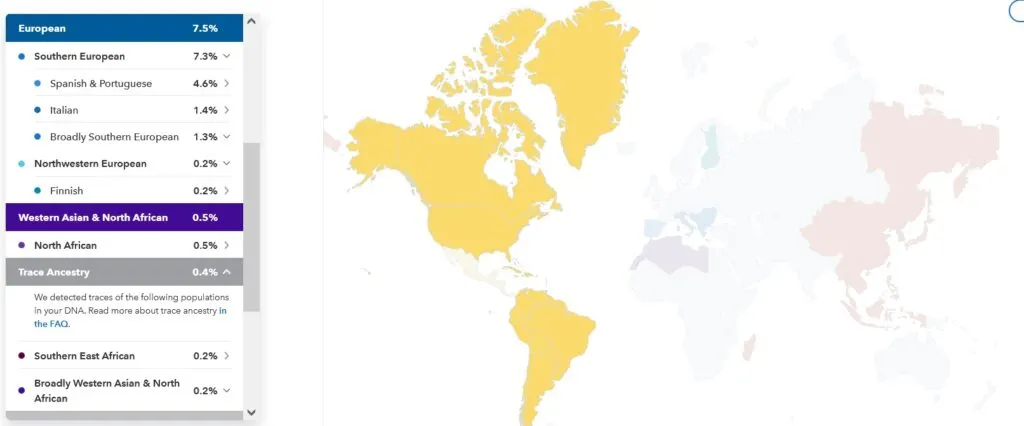
In addition, your 23andMe results might include matching to a specific country in Latin America. For example, if your ancestors were from Mexico, then you might have Indigenous American and Southern European on your results, yet also find that you received matching to a specific country in the "Recent Ancestry in the Americas" section of your Ancestry Composition report.
Below, you can see that the DNA tester from above received a match to Mexico, which of course was no surprise to them. However, they were interested to see that 23andMe has matched them to specific states in Mexico, which seems to line up with family stories about ancestors coming from a state farther north:
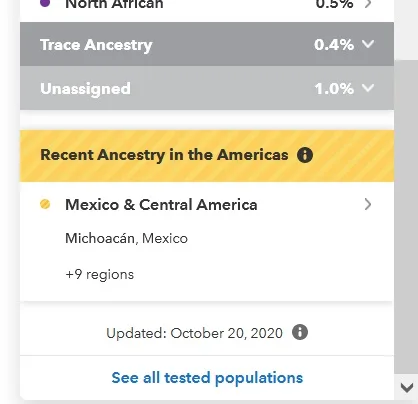
In addition to the Ancestry Composition report, this DNA tester also received 1500 DNA matches, which is the typical number of DNA Relatives that 23andMe displays on the report:
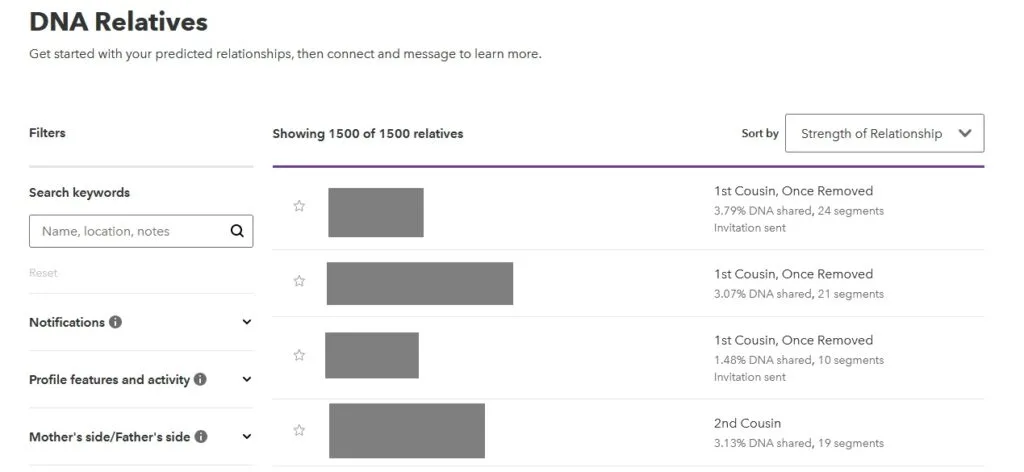
There are several other reports available along with these results. Below is a portion of the full list of Ancestry Reports, such as the Maternal and Paternal Haplogroups.
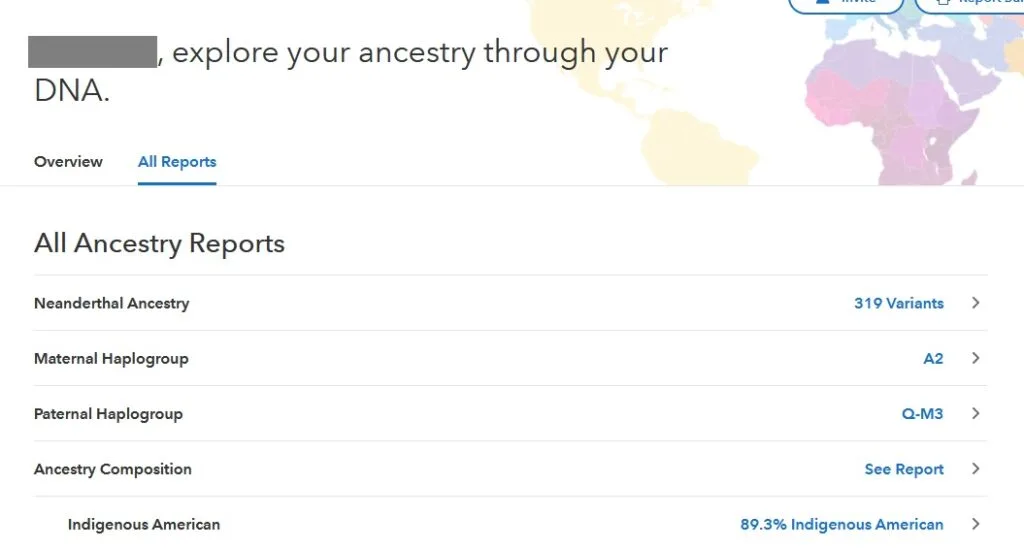
The DNA tester was not surprised to see the A2 Maternal (mtDNA) Haplogroup and the Q-M3 Paternal (Y-DNA) Haplogroup, both well-known Native American haplogroups, as they are familiar with their Native American ancestry and speak an indigenous language. However, these results do confirm what they believed to be true about their family history.
In addition, this information helped them learn that their European and African regions likely were not introduced in their family tree through their direct-line maternal or direct-line paternal ancestors.
23andMe result for mixed European ancestry
What do 23andMe results look like for a person with a lot of European ancestry? If you have ancestors from different countries in Europe, you will see these different regions reflected in your results.
Occasionally, especially if you have recent ancestors from a particular European region, you might see that your DNA matches sub-regions, such as administrative regions or counties, within a country.
Below, you can see results from someone with ancestors from the Netherlands, Germany, and the United Kingdom. You can see that 95.6% of their DNA shows up as Northwestern European, matching specific regions in the Netherlands and Germany.
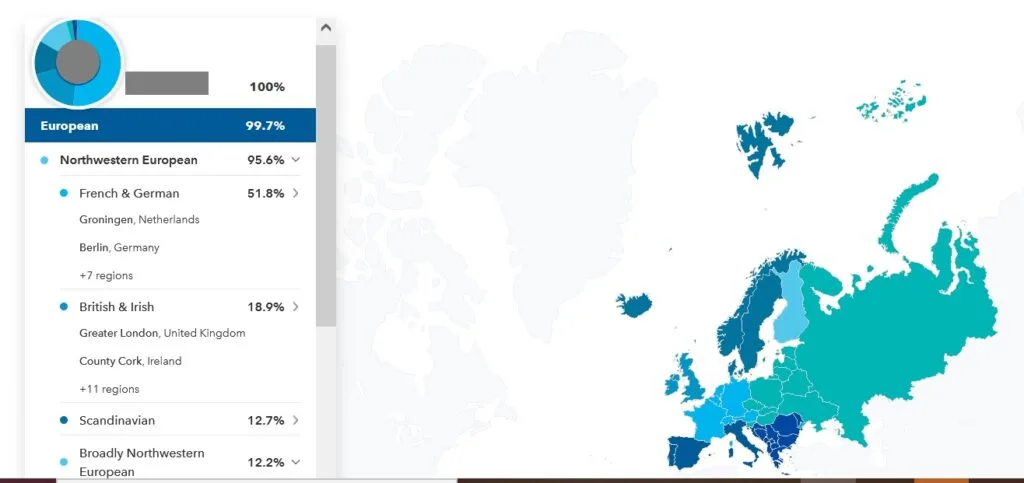
As a matter of fact, this person's Dutch ancestors come from Groningen, and their German ancestors from Berlin. For this person, 23andMe got it exactly right.
Even though this person knew a lot about their family tree, there were a few surprise regions in their results. Further down on the results, we see that they also show some Eastern and Southern European ancestry, as well as possibly a trace amount from North Africa.
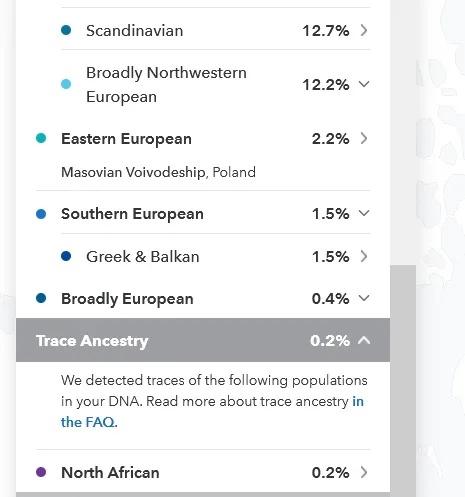
Of course, directly from your 23andMe results, you can click on any of the regions that you see and explore your DNA results in even further detail.
In addition to the Ancestry Composition report, this person has 1501 DNA matches, which is right in line with the 1500 that we usually see. The DNA Relatives are organized in order to closest relationship to more distant, with the option to filter and sort the matches based on a variety of criteria:
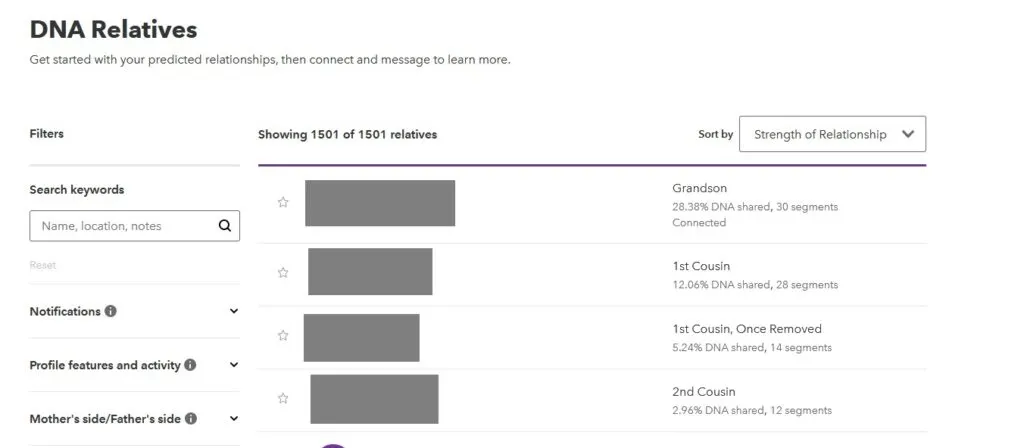
23andMe has a special feature called Family Tree, which I mentioned towards the beginning of this post. Using advanced technology, the feature can determine where a DNA match might fit on your family tree and automatically place them there.
Below, you can see an example of how this might look:
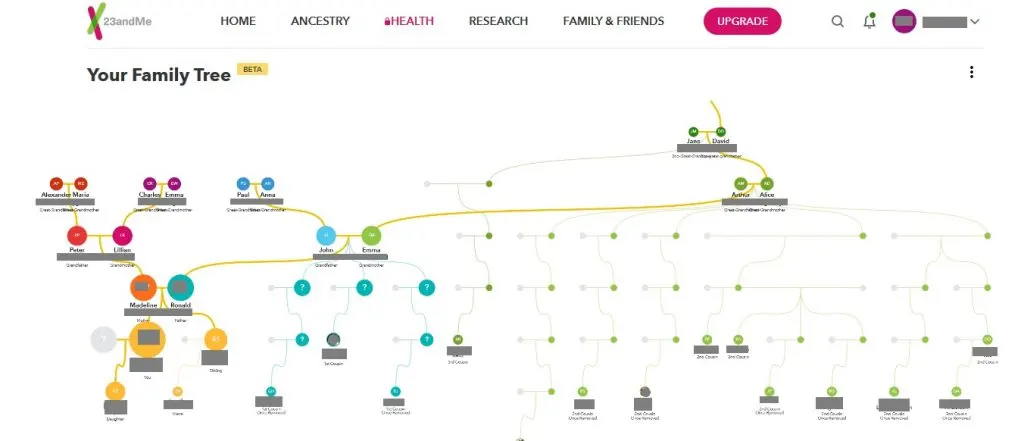
There is much more detail from these two sets of DNA results than I can go into in just one blog article. If you haven't yet explored your own DNA results, I highly encourage you to do so.
Conclusion
I hope that this post has helped you understand more about what you can expect from your own 23andMe results. If you have any questions about something that you read here, or if you want to share what you are hoping to learn, please join in the discussion below.
Thanks for stopping by and reading today!


Konfusedkat
Saturday 29th of January 2022
Are you able to explain how dna can be shared but not necessarily ethnicities?